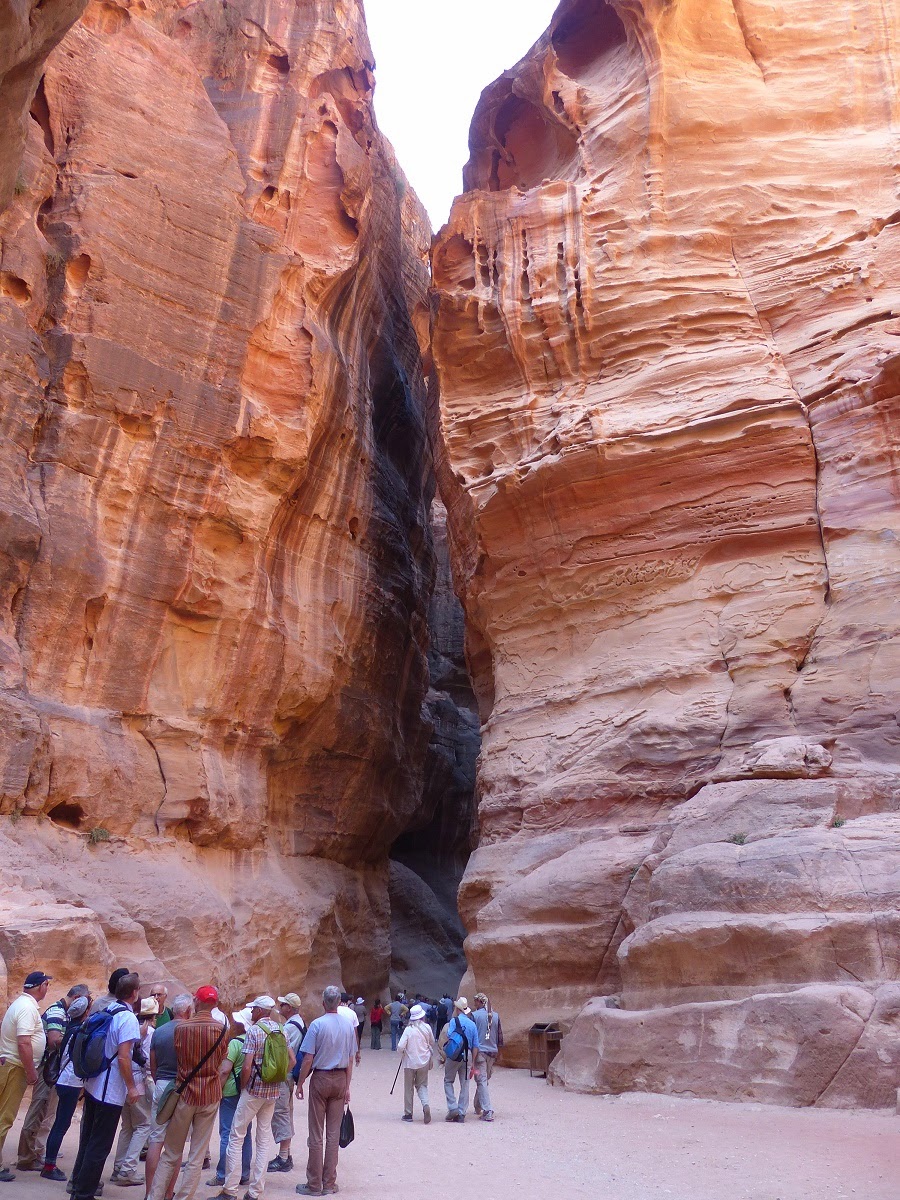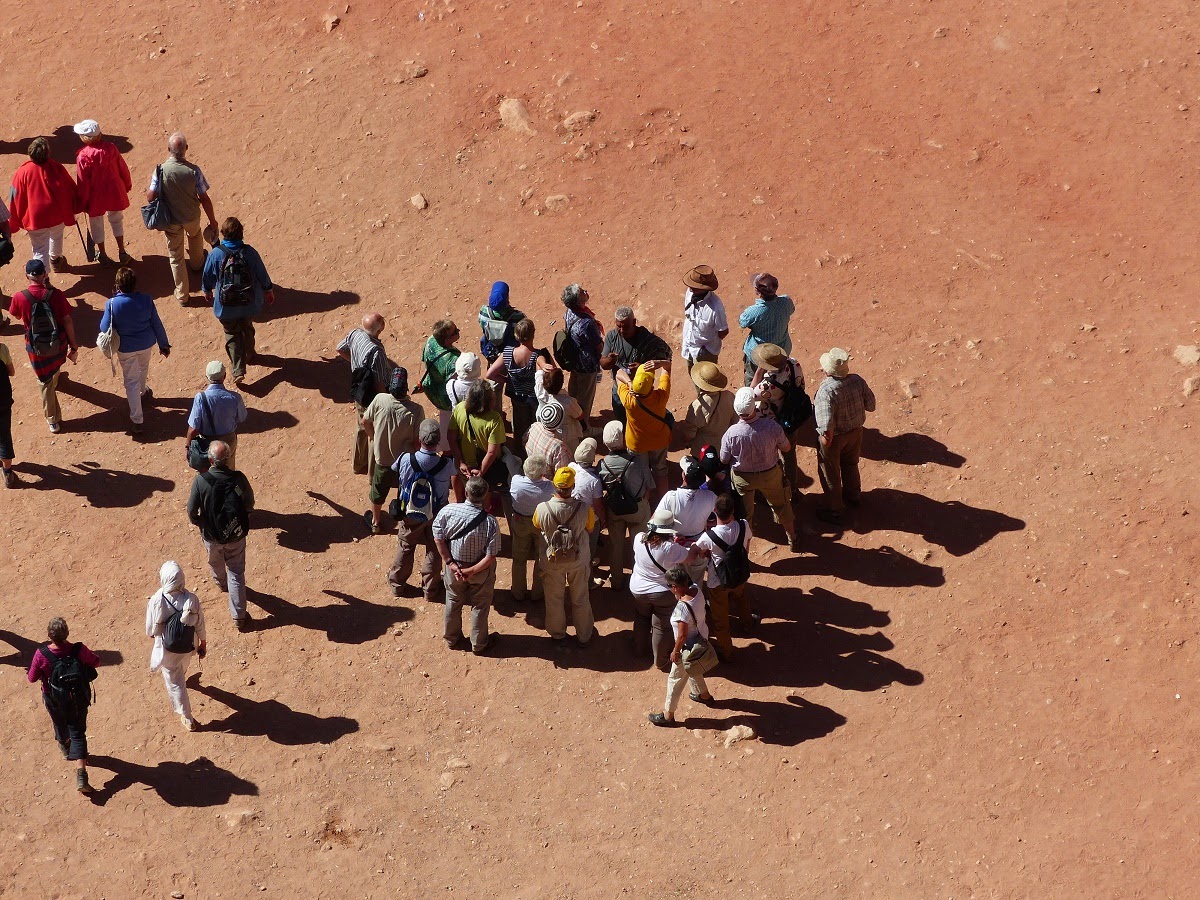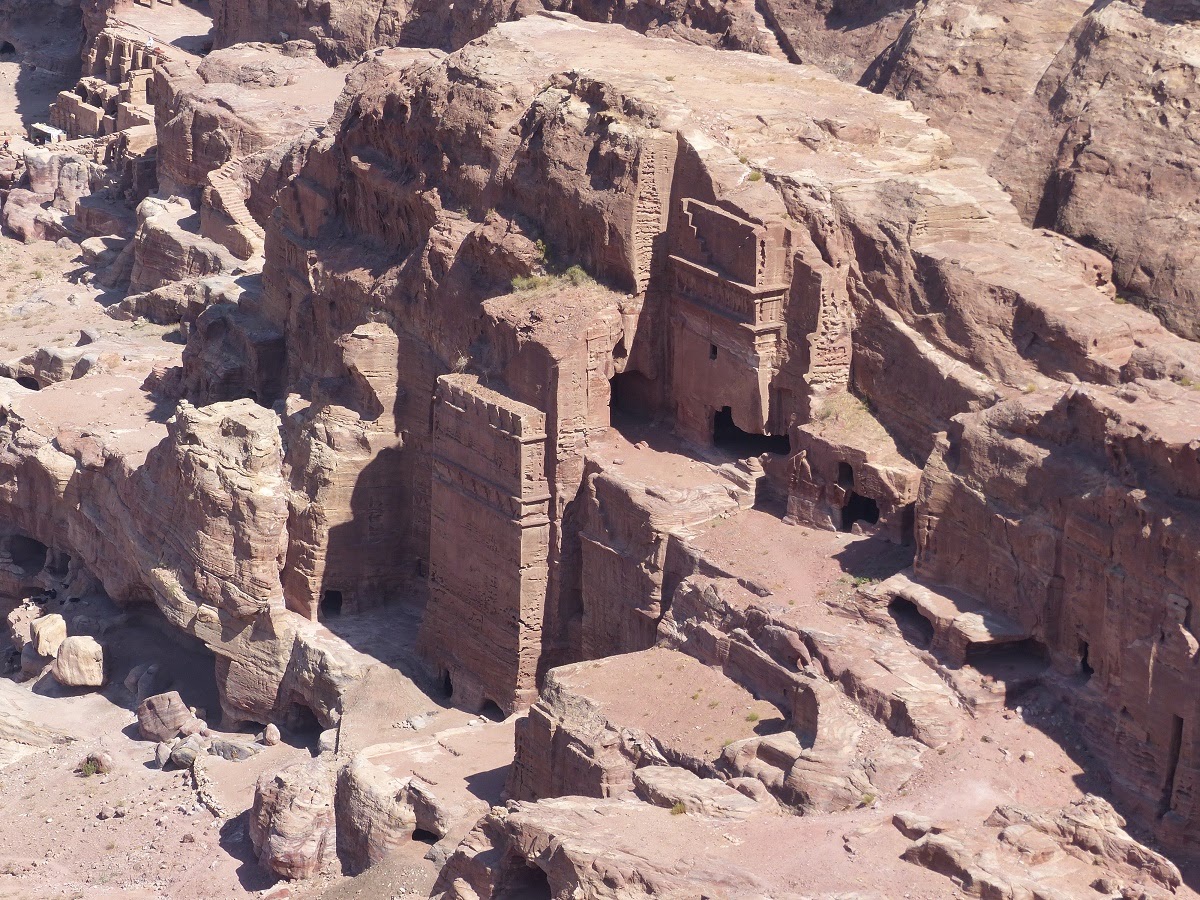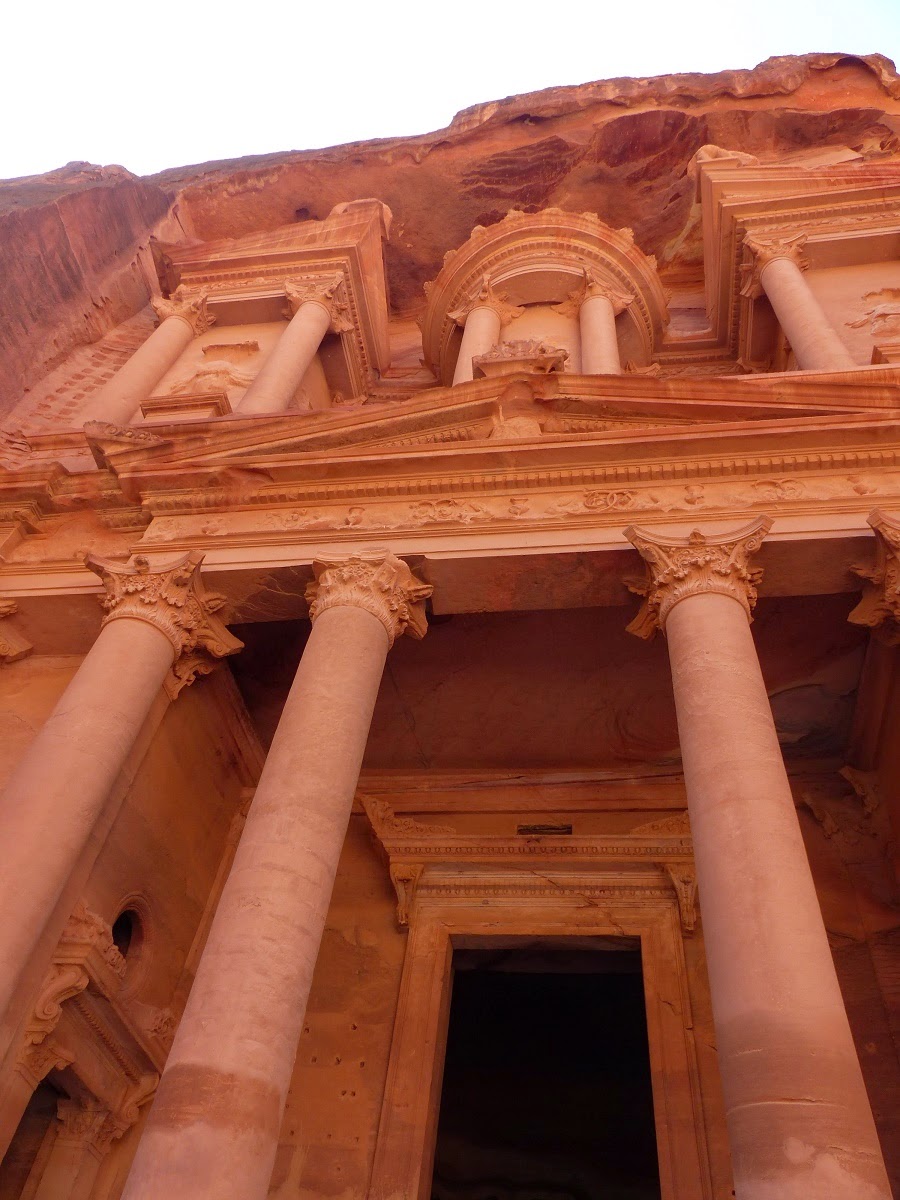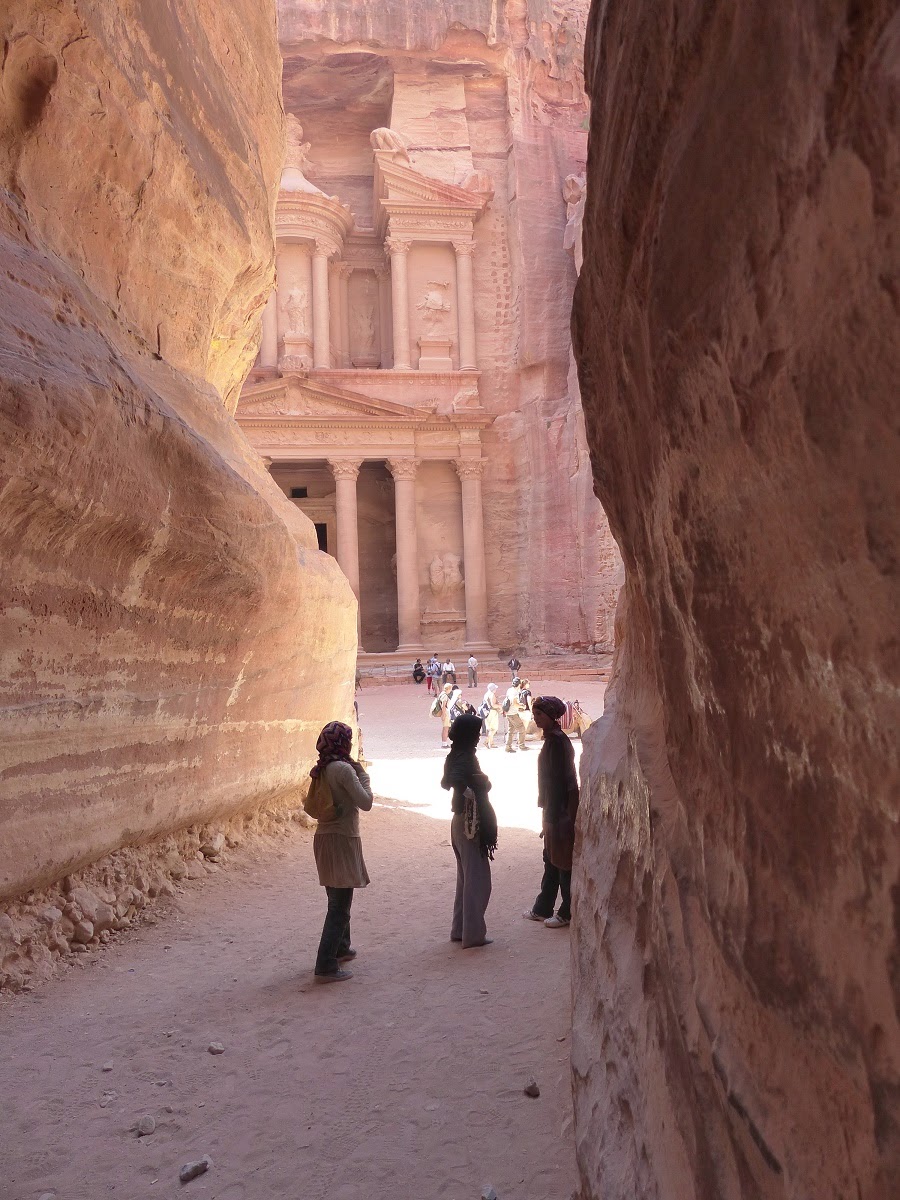Its one of the "Seven Wonders of the Ancient World", so I expected it to be incredibly touristy but still worth visiting... Much like the Pyramids in Egypt...
And that's about how it was ... way too many tourist for my liking but impressive and well worth the cost and effort anyway :)
Much of Jordan is flat and very arid... not a lot too see or do here!
But in the real around Petra it becomes rugged and rocky with sandstone formations much like the Moab area in Utah USA. And in one of the valley systems in those sandstone hills is Petra... By the way, the name "Petra" simply means stone or rock in Latin, so we really don't know what the local people called the place in their own language... they didn't leave any written records of their culture!
The current prevailing theory is that all of the rock carved rooms and facades are actually a huge necropolis rather than an actual city used for trade, though they believe that the area was a centre for trading caravans from many areas and the trading centre was located near-by but not in this valley... This was a sacred valley used to bury the dead.
there seem to be about three different types of tombs, from three different eras... The first type are the simplest and are effectively simple rooms hollowed out of the rock with a single door.
The next and more sophisticated type of tomb is more or less a simple "box" of stone formed by carving away the natural shape of the hill that the simple room was carved into... There are some adornments to the cubic tombs but not much.
Inside the tombs you usually find quite a few graves carved into the floor... And even the graves may well have held the remains of multiple people... I think the current theory is that a tomb was for a single family and they gradually "filled" up over the decades... but again, who really knows?
The sandstone in the area is generally quite soft and has been eroded by wind and water into all sorts of interesting shapes.
Unless it has been exposed to lots of water, which actually acts as a hardening agent.
And so the hoards of tourists arrive at the parking area quite a way from the monuments in the Petra valley... We all then proceed to walk a couple of kilometers through a very narrow "slot canyon" to the main monument valley.
The builders protected the road way from erosion by carving rain gutters along the sides of the slot canyon and put quite a lot of effort into diverting waterways and ensuring good drainage to protect the valley from water damage... very interesting!
And after about a kilometer of winding your way along the canyon you emerge into the light...
And immediately in front of you is the most spectacular of the rock facades (the third and most elaborate and recent type of tomb)... This one is the best preserved in the whole valley due to it being in the most protected location). Its referred to as "The Treasury" but these days its assumed that its actually the main temple for the valley... but that "diagnosis" may change as archaeologists slowly learn more....
In fact, only recently did they discover that the current "floor" of the valley is in the completely wrong place and should in fact be about 6 metres lower down... Excavations in front of the treasury have shown that there are further tombs below this main façade and inscriptions on the face below that... which we currently believe is the true "floor" level.
Over the centuries the valley has been filled up with sand and for many centuries the whole site was completely "lost" and no one knew where "Petra" was. The trading city was at its peak at around the time when the Roman civilization was at its height and the Romans recorded the existence and rough location of the city, but little more was known.
After a look around at the "Treasury" area I wandered down the valley and looked at many more of the less well preserved tombs and facades. Then I headed up a long set of stairs that lead up and over one of the local hill peaks and enjoyed the views of Petra from above...
The sandstone erodes and wears easily so many of the steps are in bad condition are completely worn away...
Some Obelisks at the top of the hill.
Looking down on people and camels etc.
A Juniper tree... Probably over a thousand years old!
Many many tombs in the valley walls...
The main tourist route through the valley.
The sandstone that has been protected from sun and rain has the most beautiful patterns and intense colours.
The hills are full of tombs
The insides of most of the tombs are stained black by smoke from fires... The Bedouin used most of the tombs as homes for a few centuries, long after the place was abandoned for unknown reasons.
But there are a few that are free of soot and the colours and patterns of the rock inside are truly wonderful.
The architectural features of the facades seem to contain features and aspects in common with many different cultures, from Egyptian to Greek and Roman and Persian... Seems appropriate for a major trading centre that had ongoing relations with all of these places... Its like the tomb city was designed to please the eye of the visitors as much or even more than the locals... very cosmopolitan.
I was here :)
And then back out the same way I walked in.
A very nice Arabian horse for tourists to ride... A little odd to see it with an American "Western" saddle, and while it looks magnificent with that arched neck, the horse is a bit uncomfortable because its the harness set-up that is physically holding the hoses head in that position that makes his neck arch.
Locals still using one of the old tombs as a place to hang out and have a smoke and a cup of tea :)












